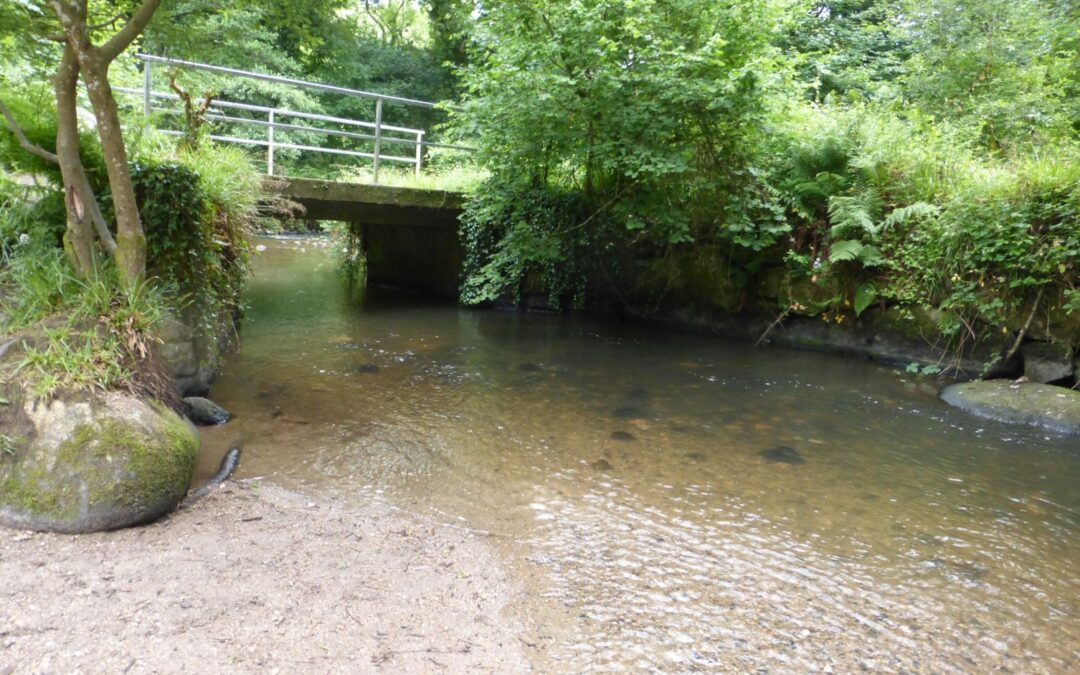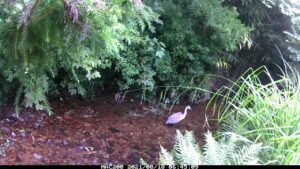UPDATE 15 August: South West Water is introducing a Temporary Use Ban for hosepipes from 23 August.
Find out more and keep up to date at: southwestwater.co.uk/advice-and-services/save-water/hosepipeban/
THE HEALTH of our rivers becomes even more paramount during periods of drought, for biodiversity and our way of life too.
Some news channels today, Thursday 11 August, indicate a drought will be declared across the South West from Friday 12 August, bringing with it a series of restrictions on domestic and commercial use of water.
This follows a prolonged dry spell across much of the UK, and a four-day amber heat warning for parts of the Westcountry up to Sunday 14 August from the Met Office.
The past few weeks have shown us how a lack of rain can require temporary use bans (often called hosepipe bans), put river species in peril, impact on agriculture, and cause wildfires.
Responding to this effectively is critical to protect our water resources. We have to act now to ensure they can keep up with demand, or, more to the point, how we can improve our water resource infrastructure, and make changes at home and in business to reduce our usage – not only during dry periods but in the long-term.
And, at the same time, we need to continue to care for our rivers to keep our freshwater environments thriving.
WATER USE
There is much that can be done to manage water resources. We support our national body The Rivers Trust’s call for an urgent and rapid reduction in leaks from UK water infrastructure; more advice to reduce household water usage such as recycling grey water, using low-flush toilets, water-wise gardening, and provision for better, and fairer, water metering; and the widespread implementation of sustainable drainage and nature-based solutions such as rain gardens, wetlands, and permeable pavements to help store and hold water. This can help us to deal with periods of drought, as well as providing benefits for biodiversity.
For the past few weeks there have been calls for people to reduce their water usage – and despite other areas of the UK now under ‘hosepipe bans’, South West Water has yet (11 Aug) to declare this for its customers.
The water company is reviewing its Drought Plan – a legal requirement – for how it will handle drought situations and, for now, it is asking everyone to ditch unnecessary water use such as filling up paddling pools or using a hosepipe to wash a car.
Read its water saving tips and its myth buster – with only 1% of all the water on our planet being accessible freshwater, there’re quite a few misconceptions around why we need to save water in the UK.
And learn more about drought, where your water comes from and how it gets to your home in this Sky News article.
Water restrictions do not mean drinking less water to stay well – so do stay hydrated. This public health advice may help.
As local reservoir and river levels are lower than they should be, being water wise is essential, especially if long dry periods become more frequent.
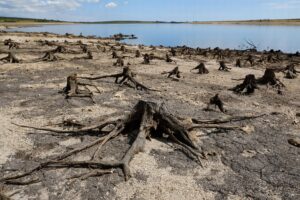
Around the receding shoreline at Colliford Lake there are signs of the preparation work that was done before the land was flooded in 1983. (Image: Greg Martin / Cornwall Live)
Images of Colliford Lake, Cornwall’s largest reservoir, taken by photo journalist Greg Martin on 7 August show how dramatically its water level has dropped, to the point that a hidden landscape not seen for decades has been revealed.
The Parliamentary Under Secretary of State for the Department for Environment, Food and Rural Affairs Steve Double visited the lake on Wednesday 10 August.
Our river operations manager Ben Gallant met the minister to discuss the importance of integrated landscape management in dealing with events such as this.
Ben said: “Collaborative approaches and positive partnership working to tackle the various challenges our freshwater environments face are a vital way of getting things right for all the people, species and businesses they support.”
RIVER ECOLOGY
Our water resources are not just relevant to our daily lives though. Drier weather has a noticeable negative impact on river flows and sensitive aquatic life which are key to a functioning river ecology.
The lower the flow over an extended period, especially in the warmer summer months, can lead to critical biological temperature thresholds for species that prefer cooler water. This includes fish such as salmon and trout, and invertebrates that need higher oxygen concentrations to thrive.
Our fisheries technical officer Phil Turnbull said: “For fish such as salmon, during extended periods of low flow, they can become stuck in the lower reaches of rivers.
“This can be due to human-made in-river barriers to migration such as weirs in order to control river flows and these can limit migratory fish from travelling to and from vital freshwater habitats.
“These areas can also suffer from poorer water quality due to urban and/or agricultural run-off and an increased concentration of pollutants, both chemical and organic, by simple dilution factors.
“Essentially, the warm and high risk lower reaches of a river are not the place to hang out if you are a sensitive species like a salmon.”
We believe, given our human impact on our natural resources, we should do what we can to restore migratory access as part of a collective stewardship of our natural environment, with projects such as our Strategic Exe Weirs programme, in partnership with the River Exe & Tributaries Association, an example of restoring the natural migration patterns for fish.
Phil added: “The low flows of summer 2022 may be seen as an anomaly in the future, or it may become a more regular pattern (which the data currently suggests is more likely).
“But either way, it does not take a whole summer of severe low flows for the risks to migratory fish to be realised.
“A single period of low flows restricting migration over unnatural barriers coinciding with an acute pollution event could have disproportionate and dire consequences on local migratory fish populations.”
Our Plymouth River Keepers project has been using an in-situ monitoring probe (known as a sonde) in Tamerton stream since July 2021.
Project officer Jenny Wytcherley said: “We now have 12 months of data relating to temperature, depth and electrical conductivity (which is recorded every 15 minutes and can be an indicator of human-related pollution).
“The sonde is paired with a trail camera which also takes a photo every 15 minutes, and we match it up to 15 minute rainfall data from the nearest rainfall gauge approx. 2.5km away so that we can see how rainfall affects the stream due to pollutants such as road run-off.”
The stream is a vital source of freshwater – wildlife captured on the trail camera drinking, bathing and/or swimming include egret, grey heron, mallard and domestic mallard, wood pigeon, magpie, robin, blackbird, blackcap, great tit, pied wagtail, and chaffinch.
It is also on the migration route to spawning sites for brown/sea trout and European eel from the Tamar estuary.
In July 2021 the lowest water depth was 0.12m/12cm, and the highest water temperature was 17.9 degrees Celcius, with 142mm of rain falling during the whole month.
In July 2022 the water depth fell to its lowest recorded depth over the whole 12 months, to 0.8m/8cm, and the highest water temperature was 19.5 degrees Celcius (also the highest temperature for the whole 12 months), with 10mm of rain falling throughout the whole month.
The maximum depth recorded during the year is 0.87m / 87cm in October 2021 and, as a small stream, it is affected quite quickly by too much or too little rain.
Yet as of 8 August, the Met Office is suggesting that the latter part of August will see plenty of rain after England’s driest July since 1935, although not so much in the south of the UK.
OUR CITIZEN SCIENCE
Our flagship WestcountryCSI has seen our citizen science volunteers out and about across the region monitoring their local rivers and streams. Their efforts are highlighting the lower freshwater levels and helping us to keep abreast of the current situation.
In 2021, the volunteers took more measurements than the Environment Agency and we want to increase this ten fold in the coming years.
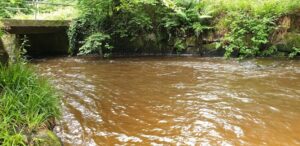
A view of the River Par at Luxulyan taken in July 2021 by our citizen scientists, Roger Smith and Mandy Case
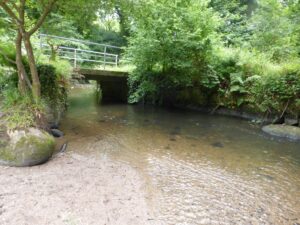
A view of the River Par at Luxulyan taken in July 2022 by our citizen scientists, Roger Smith and Mandy Case, showing the lower water level
If you see any river wildlife in difficulty such as fish trapped in cut off pools or gasping for air, please call the Environment Agency 24-hour service on 0800 80 70 60.
CLIMATE CHANGE
With conversations about the weather often noted as a British quirk, these situations could act as a means to broach the wider topic of climate change.
Weather and climate change are often confused; weather relates to the short-term atmosphere condition, while climate relates to the long-term average pattern of weather for a particular region.
The State of the UK Climate 2021 report provides an assessment of UK climate trends, variations and extremes based on the most up-to-date observational datasets of climate quality.
Prof Liz Bentley, Chief Executive of the Royal Meteorological Society, said: “This report not only helps to highlight the latest knowledge on our changing climate but also enables us to understand the trends, risks and impacts to help inform how we will need to adapt, now and in the future.”
And using water resource wisely will become even more vital in the future as we continue to adapt to a changing climate.
Projections show that, by 2050, some rivers could have between 50 and 80 percent less water during the summer, with summer temperatures set to be up to 7.4 degrees hotter.
WHEN IS DRY WEATHER A DROUGHT?
In July, most of England moved into ‘Prolonged Dry Weather’ status – meaning the Environment Agency is taking precautionary actions to mitigate impacts as hydrological conditions deteriorate and enhancing its monitoring and protection of water resources, along with the water companies.
The rivers movement national body The Rivers Trust is part of the National Drought Body, made up of public and independent water sector organisations who monitor the situation and recommend action to take.
Even though a drought is caused by a period of low rainfall, each is different, with the nature, timing and impacts varying according to location and which sectors are affected such as public water supply, agriculture, the environment and/or industry.
Christine Colvin, advocacy and engagement director at The Rivers Trust said: “Part of our current issue with low water levels leading to measures like hosepipe bans is that we still think of this as a wet country, treating water as an infinite resource.
“It’s not viable to meet our current consumption patterns in the same way in the future, so water must be treated as the most precious resource – after all, it is the source of all life.”
LINKS
https://news.sky.com/story/drought-expected-to-be-declared-in-the-south-west-tomorrow-12670509
https://www.gov.uk/guidance/public-health-impact-of-drought-advice-for-the-public
https://www.southwestwater.co.uk/advice-and-services/save-water/top-tips/
https://www.southwestwater.co.uk/environment/a-precious-resource/drought-plan/
https://www.southwestwater.co.uk/advice-and-services/save-water/save-5-litres/
https://www.southwestwater.co.uk/environment/a-precious-resource/current-reservoir-storages/
https://www.metoffice.gov.uk/weather/climate-change/causes-of-climate-change
https://rmets.onlinelibrary.wiley.com/doi/10.1002/joc.7787
https://www.gov.uk/government/news/environment-agency-convenes-national-drought-group

